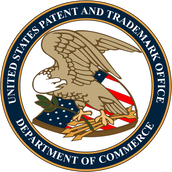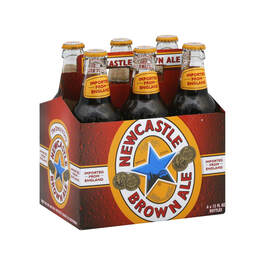How science, law, and business collide!My November 2021 post addressed the difference in the level of FDA oversight of nutritional supplements versus medicines. I offered some ideas for how English and History teachers, as well as Health and Science teachers could enrich the instruction in their classrooms using facts about nutritional supplements and the FDA. In the post, I also discussed food safety and laws regulating the price, weight, and quality of foodstuffs. I alluded to another type of food “purity” labeling, which trains my spotlight on another opportunity for classroom enrichment: the collision of Science, Law, and Business. Apples, Burgers, and CakeThe flavors you experience each time you bite into an apple, a burger, or a piece of cake are probably a bit different depending upon the temperature, moisture, and other conditions each was exposed to before it’s arrival to your mouth. But despite some taste differences, you recognize each because of visual and aroma clues. We all know apples, burgers, and cake are words for a roundish fruit with five seeds, a savory patty served on a split bun, and a sweet bread-like desert. Foods are Made of Chemicals Those foods, along with all others, are complex mixtures of thousands of chemicals. Proteins, carbohydrates, lipids, and water usually make up most of a food’s mass. The remainder consists of vitamins, minerals, and thousands of compounds that are important in the color, aroma, and taste of the food.  Food scientists can determine those components by measuring viscosity, weight, thickness, color, granulation size and texture. Amounts of nutrients can be calculated using standardized tests. Techniques such as filtration, distillation, chromatography, and centrifugation can be used to isolate each individual constituent part.  Learning the ingredients of foods is easily accessible to all. A simple internet search can yield recipes for making a great dill pickle, rich chocolate pudding, or tangy eggplant parmigiana. Chefs share their recipes and food scientists can break down any mixture into its basic elements. Phony Bologna  But the European Union (EU) says the sum of the component parts is inferior to a genuine whole. Food names that many of us consider as common as apple, burger, and cake have been the subject of debate across world markets. In 1992, the EU created a registry to protect local specialty foods and drinks by establishing geographical indications (GIs). The registry protects the names of regional wines, cheeses, hams, sausage, olives, beer, breads, fruits, and vegetables.  To qualify as Roquefort, for example, the cheese must be made entirely from the unpasteurized milk of the Lacaune sheep and aged in the Combalou caves of Roquefort-sur-Soulzon. There, the cheese is exposed to naturally occurring Penicillium roqueforti, which give it the characteristic blue veins. The “Roquefort” sold in the US is made from pasteurized milk, and is, therefore, not genuine; other bleu cheeses that may use Penicillium roqueforti are not genuine if they use a different kind of milk or are not aged in the Combalou caves.  The EU’s position is that champagne from California is a cheat, feta from Wisconsin is fake, and cognac from Chile is counterfeit. The names Bologna, mozzarella, Roquefort, Bordeaux, and Chablis, as well as Darjeeling tea originally from India, Jamaica's Blue Mountain coffee, Morocco's Argan oil, Thailand's jasmine rice, and basmati rice from India and Pakistan all belong to small producers in specific regions where those delicacies originated, says the EU. In the European view, geographic name protection even trumps trademark rights. For example, state-owned Czech brewer, Budweiser Budvar, has been brewing beer since the thirteenth century, whereas German immigrants founded Anheuser-Busch in the nineteenth century. According to the EU’s argument, Anheuser-Busch should be stripped of its moniker. Big Conglomerates Respond So far, Anheuser-Busch and the Czech brewer are still engaged in legal battels over the Budweiser name. Anheuser-Busch says that the Budweiser brand, which grew in America, is worth $12 billion, and the Czech beer gets a free ride on their beer’s reputation.  Food conglomerate Kraft started using the name “pamesello” to sell its cheese in the EU in response to a European court’s ruling prohibiting Kraft’s use of “parmesan”. The Europeans also say no to other Anglicized versions of European names like Romano (Pecorino Romano) or any name suggesting a connection to the Old World, such as "Italian-type" or "Bordeaux-style".  Kraft has spent millions of dollars promoting its brands and, as a result, they are immensely popular. The company owns several other products that also are vulnerable to the GI system of the EU. Among them are Louis Rich Salami, Grey Poupon Dijon Mustard, and General Foods International Coffees like Swiss Mocha and Irish Cream. Kraft fears that changing names of these known products runs the risk of losing customers.  At what point will claims over these “intellectual property” rights end? Other US producers are concerned about the broadening protectionism sought by the EU. Might it expand to French winemakers claiming that the Bordeaux bottle shape has been illegally copied by makers outside that region? Could Italy claim the right to certify that Italian restaurants outside its province adhere its cooking traditions? Intellectual Property Law Intellectual Property Law gives people and businesses property rights to the information and intellectual goods they create. There are four areas of US law linked under ‘intellectual property’. They are copyright, patents, trademarks, and trade secrets.  Copyright law incentivizes the production of creative works such as books, music, sculpture, movies, and computer programs. Copyright does not require a work to be entirely novel; it is a protection of original expressions, not ideas. One story can generate many distinct movies, for example.  Patents can be issued for inventions. An invention must be described in detail, to show how it is "new, useful, and nonobvious" and must be able to be reproduced and verified by others. US Patent applications are published. Enterprising members of the public can view them and benefit from the original ideas disclosed in the patent filings and create further innovations.  Trademark law informs customers that their preferred vendor, not a counterfeiter, is the source of the goods they’re buying. Trade secrets confer economic benefits on the holder and are subject to the holder’s efforts to maintain secrecy.  Copyright- and patent-holders extract monopoly rent from their creative expression or their invention for a limited period. The termination of a copyright or patent means that the asset enters the public domain. Works in the public domain may encourage the further production of original expressions and inventions by providing raw materials for other creators and inventors to build on. The Goal of Science is to Further Knowledge Peer review and the reproducibility of other’s work are key in science. Unselfish cooperation and endeavor toward greater understanding is science’s lofty goal. This transparency is contrary to the concept of intellectual "property", with an eye toward commercialization and the debasement of pure of scientific research. Yet, scientists, too, have a right to the fruits of their labor. The Fruits of Labor  Shuji Nakamura, for example, invented the blue Light Emitting Diode (LED) in 1992 while he was an employee at Nichia Corporation in Japan. LEDs have a longer lifespan, emit less heat, and use less electricity than both incandescent and compact fluorescent light sources. The invention of blue LEDs meant that blue, red, and green could be combined to produce white LED light, which can function as an alternative energy-saving light source. After accomplishing this breakthrough invention--which is fundamental to hundreds of billions of dollars’ worth of electronics today--Nakamura was given a cash bonus equivalent to $180. He sued his employer in 2001 over the profound unfairness of the award and, after a 4-year legal battle, won a settlement worth $7 million. Nakamura's successful lawsuit signaled legal recognition that inventors are entitled to at least some of the fruits of their labor. The Public Domain  No one creates anything in a vacuum. William Shakespeare used the existing language, themes from the English monarchy, and plots from previous Italian and Roman works to write his plays. Steven Jobs added his own “tweaks” to the first consumer computer. Even Shakespeare and Jobs stood on the shoulders of giants. Is an idea, or even the expression of an idea, ever really 100% original?  When a new work or invention is produced by an individual they may exclusively profit from the copy, distribution, or lease of their work for a limited time. After that, creative works, as well as inventions enter the public domain. The term “public domain” refers to creative materials that are not protected by intellectual property laws such as copyright, trademark, or patent laws. The public owns these works, not an individual author or artist. Anyone can use a public domain work without obtaining permission. The first copyright act in 1790 allowed a 14-year monopoly on original work. Currently, copyright protection usually lasts for the life of the author plus an additional 70 years. The term of most patents is 20 years from the filing date of the application. These monopolies are intended to promote the progress of useful arts and science by protecting the exclusive right of authors and inventors to benefit from their works of authorship for a limited period.  In recent years, congress has drastically increased copyright terms. “Copyright Trusts” allow the intellectual property rights of the long-dead original holder to pass onto their heirs. This has placed restrictions on those who would make derivative works based on material that would have long ago have passed into the public domain.  The public domain includes ideas and concepts that belong to society and are available to be drawn upon for future use. The granting of temporary “leases” to “creative landlords” to extract monopoly “rent” was originally established as a limited time privilege that ultimately returns for the collective good. Even the term intellectual “property” likens it to other scarce resources. Scarcity  Things have more value when they are scarce. The more abundant they become, the cheaper they become. But technology is promising to end scarcity for a wide variety of goods. For example, the Internet has reduced the cost of production and distribution of informational content effectively to zero. Other technologies are starting to do the same for some physical goods and services.  3D printers can manufacture physical goods based on any digital design. Synthetic biology has automated the manufacture genetic sequences, allowing a creator to upload a gene sequence of their own to a company that will use basic genetic building blocks to “print” it. Advances in robotics offer the prospect that many of the services humans now provide can be done for free by general-purpose machines that can be programmed to perform complex functions. Of course, none of these technologies are yet capable of reducing scarcity. But they share two essential characteristics with the Internet: they reduce the cost of production and distribution of things, and they separate the informational content of those things (the design) from their manufacture. Together, the Internet, 3D printing, robotics, and synthetic biology may provide a world in which most things that people want can be downloaded and created on site for very little money. Property and Creative Work  Property is a general term for the rules that govern people’s access to and control of resources. Most legal systems distinguish between different types of property. Common law has long recognized real property (land) and personal property. Throughout the last centuries of the second millennium, more complex theories of property have developed. Property may be tangible (such as cars and appliances) or intangible (such as stocks and bonds, digital files, internet domain names, patents, copyrights, and trademarks).  There are many disagreements about the use of property, particularly when the property in question is either scarce, necessary, or both. Creative ideas, identified as intellectual property, are a type of property that is not scarce. Unlike material objects, their use by any one person does not preclude their use by any number of others. They can be shared, borrowed, reused, reworked, and never diminished by the originator. The legal treatment of intellectual property is to artificially replicate scarcity where it would not otherwise exist. A Recipe as Intellectual PropertyEuropean food and drink producers support GIs as their intellectual property. They view their rights being infringed upon when the names of products they have made for hundreds of years are used as generic terms. If another business makes a “copycat” product and has trademarked the name or the name is considered generic, legal action is too expensive for a small enterprise. The GI scheme established by the EU was created to protect the intellectual property rights of small local food artisans. Protected Geographic Status Controversial  But Europe’s GI law is controversial on several fronts. Emigrants who may want to continue to make their native products can be prevented from producing them commercially, thus infringing on their cultural rights. Producers of like products may incur costs in re-branding. Costs may also be incurred by regulating governments and by consumers. Additionally, a valid argument against the protected designation of origin status is that the ingredients of the food determine the product, rather than the locale where they are assembled.  Further confounding the matter, traditionally made products are often made in small batches. Cheddar, made in the village of Cheddar in the UK, if granted GI status, would not be able to keep up with worldwide consumption. The US, Germany, and France produce millions of tons of cheddar cheese annually.  Another anomaly to the GI protected status scheme is Newcastle Brown Ale. Brewed in the city of Newcastle, it received protected status in 2000. But in 2005, the company moved their brewery to another city. Since they did not fall within the Newcastle geographic region, they needed to have the geographical indication cancelled to continue to sell the product under the Newcastle Brown Ale name. Stifling Competition The EU’s broadened GI designations have been viewed by the US as protectionist. Among the list of EU’s restricted cheese names are parmesan (a hard grated cheese), gorgonzola (a blue cheese), asiago (a hard alpine cheese), and feta (a crumbly, briny cheese). In the US, these are viewed as generic terms, much like those names that correspond to regions such as champagne, Feta, Gruyere, and Camembert. In the US, Europe’s GIs are not protected, but the EU’s expanded classification of GIs have eroded US export sales. Producers are Protected Through Trademarks in the US The US ensures that producers can protect themselves from imitation or misuse of their brand through trademark law. A trademark can be a symbol, slogan, design, word, or combination of elements that allows easy identification by consumers and distinguishes a business’s goods or services from its competitors. Examples of well-known trademarks include the three-toned chimes of NBC, the Nike "swoosh," the McDonald's "golden arches," and the shape of the Coca-Cola bottle. A trademark can even be a color, such as T-Mobile's vibrant pink.  The main purpose of a trademark is to prevent unfair competition from a company that uses consumer confusion with another company to get more business. For example, if an independent diner used a golden arched "M" as its logo, it could confuse customers who think the establishment is a McDonald's. Trademarks help customers distinguish between products and protect the trademark owner's investment and reputation. You Generally Can’t Trademark a Geographic Location  Businesses often name their companies after the town in which they are located. But obtaining a trademark with a location name is unusual. The U.S. Patent and Trademark Office generally prohibits the registration of place names as part of a trademark. The purpose of a trademark is to serve as a source identifier of the goods/services sold under the mark. If purchasers are identifying the place over the brand identity of the product/service, then the name is not functioning as a trademark and will be declined registered trademark status.  The U.S. Patent and Trademark Office does however, grant trademark status to a geographic name if it conveys some meaning other than geographic origin. There are some geographic brands in the United States that receive trademark protection. For example, a type of Neufchatel, Philadelphia Cream Cheese, adopted its name because Philadelphia was associated with high quality dairy products in the late 1800s. Other examples of trademarked geographic brands are Oneida tableware, Pella windows, Swiss Army knives, Amazon online seller, and restaurants like Paris Baguette, Boston Market, and Mystic Pizza. Regional Designations are Protected Through Certification Marks in the US Regional groups can protect a shared geographic brand by registering a certification mark. Such a mark can be used by a company to show that its product meets the standards established by the owner of that mark. The marks can facilitate quality control by requiring users to make their products in a particular place and according to specific standards. American consumers are used to seeing certification marks such as from the Underwriters Laboratories’ (“UL” symbol), the Good Housekeeping Seal, Fair Trade Certified, and kosher food certifications.  The owner of the certification mark allows producers to use the mark only if they meet certain established criteria. The purpose of the mark may be to certify origin, material, mode of manufacture, quality, accuracy, or that the labor to produce the goods or services was performed by union members. Certification marks protect Idaho potatoes, Roquefort cheese, Washington Apples, Florida Citrus, Vidalia onions from Georgia, and Egyptian cotton sold in the US. Genericization Trademark erosion, or genericization, happens when a trademark becomes so common that it starts being used as a common name. Companies want their trademark to become known, but not become too common. Examples of generic terms that were formerly trademarked include escalator, aspirin, cellophane, flip-phone, laundromat, and trampoline. Trademarks that continue to be used and are actively enforced by their owners include Band-Aid, Bobcat, Chapstick, EpiPen, Formica, Frisbee, Google, Jacuzzi, Kleenex, and Thermos.  Nintendo is an example of a brand that successfully fought trademark erosion, having managed to replace excessive use of its name by the addition of the generic term “game console”. Other examples of including generic terms are Kleenex tissues and Velcro fasteners. Trademark owners may also follow their product name with the word “brand” as with the jingle, "I am stuck on Band-Aid brand, ‘cause Band-Aid's stuck on me."  Google discourages the use of the term 'googling' about Web searches. Xerox Corporation attempted to prevent the genericization by advising consumers to "photocopy" instead of "xerox" documents. Lego Company requested that customers call their product Lego bricks, blocks or toys, but not 'Legos'. Adobe Systems wants to prevent the genericization of their trademarks, such as Photoshop, by encouraging the shortened version "shopped" throughout the Internet and mass media. Foods and Drinks are Simply Combinations of Specific Chemicals Most of the names Europe has identified as GIs have become generic — passing into common usage as cultural hand-me-downs from early European immigrants. Consumer products companies have spent billions of dollars popularizing their foods and drinks and making them part of mainstream American culture. Mozzarella, bologna, Dijon mustard and Darjeeling tea originated in specific locales, but are now made commercially in many places. Plus, a quick internet search can provide the basic recipe for each of those foodstuffs.  Mozzarella is created by “pasta filata” or stretching the curd of fermented milk. The stretching causes a rearrangement in the structure and creates mozzarella’s unique textural and melting characteristics. Bologna is a smoked, cooked, emulsified sausage. It can be made from any combination of meats or soy protein. There are millions of bologna recipes. Dijon mustard originated in Northeast France. Most commercial brands use white wine, vinegar, and black or brown mustard seeds. Genuine tea is brewed from the leaves of the Camellia sinensis tea plant. These plants thrive in China and India, though they may be grown indoors if the outdoor climate is not conducive. After harvesting, processing of the leaves results in different varieties, such as black teas found in Darjeeling, India.  As arrangements of chemicals, foods might not be considered intellectual property. Help your students understand this collision of science, law, and business with this activity.
0 Comments
Leave a Reply. |
AuthorGertrude Katz has spent over 30 years teaching K-12 public school students all major subjects. She has taught biology and education at the college level. The majority of her career has been spent instructing biology at the secondary level. Categories
All
|



 RSS Feed
RSS Feed